Helping Home Shoppers Find a Home to Love Through Home Insights


When searching for a home, it all starts with the search function. Based on search criteria and filters, users are presented with a list of ranked homes that meet their needs.
Even then, browsing dozens or even hundreds of homes to find the right one feels daunting. Most home descriptions look similar, and in high inventory zipcodes it can be hard to remember what was unique about Home A versus Home B.
Zillow is working to solve this problem in many ways. One way is through Home Insights.
The Home Insights pipeline extracts, filters, ranks and displays interesting terms from property listing descriptions. The terms are highlighted in the home detail page as well as on listing photocards in the search results page and the Updates tab in the Zillow Mobile App.
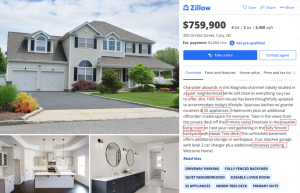
On Zillow.com, Home Insights tags are highlighted in the overview section of the home details page.
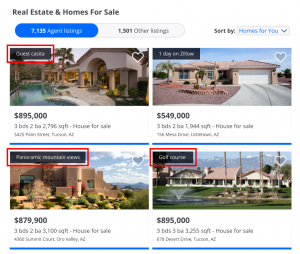
Top Home Insights tags are shown on the upper left corner of the listing photocards in search results.
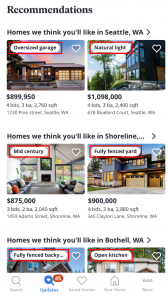
Top Home Insights tags are shown in the upper left corner of listing photocards in the Updates tab of the Zillow Mobile app.
Home Insights are key phrases extracted from listing descriptions. Zillow uses a variety of machine learning models and natural language processing techniques to extract, filter and rank these key phrases according to trending searches in each region. For example, the model is more likely to highlight ocean-related or beach-related tags from descriptions of properties in Florida compared to listings in Arizona.
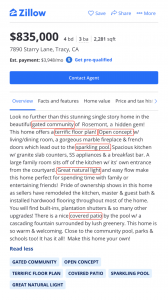
An example of Home Insights and the location within the listing description. Only a subset of attributes are extracted to highlight terms that are similar to trending searches in that region.
At a higher level, this machine learning pipeline includes three steps: keyword extraction, filtering Home Insights from keywords, and ranking the insights by trending searches.

Keyword extraction is performed using the transformer-based deep learning language model BERT. BERT was trained to learn representations for each token in the input text, which are then used in more sophisticated training objectives or fine-tuning tasks covering a multitude of natural language processing objectives.
For our use case, we fine-tuned BERT for named entity recognition (NER). The NER task identifies words and phrases from the input text as “entities” which in this case are Home Insights.
The Home Insights extracted in this process cover many aspects of the home, including interior features like granite countertops or a large family room, exterior features such as a swimming pool or patio, terms covering renovations like “new kitchen,” location information indicating the property’s proximity to features such as schools or golf courses, and even attributes that do not cleanly fit into any of the aforementioned groups, such as “natural light” or “gated community.”
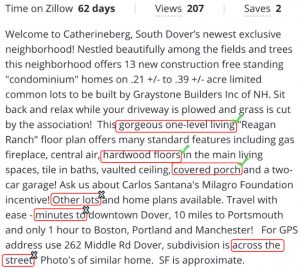
Terms that are difficult to understand without additional context (“other lots” , “minutes to”, “across the street”) are filtered out prior to display.
Following keyword extraction, the Home Insights pipeline uses part-of-speech tagging to identify malformed phrases (such as phrases that end with prepositions) and also removes any tags that are similar to a predetermined list of undesirable terms. These filters help extract Home Insights on property detail pages that can easily be interpreted on their own without any additional context.

The order of home insights on a property’s detail page is derived based on user search traffic in a given region
Even after filtering improper home insights, there are often too many tags to display under a property’s description. Thus, the pipeline uses a ranking model trained on user traffic signals tied to landing pages and keyword searches to select the top tags for each listing. There are many landing pages on Zillow that cache predefined keywords (e.g., “oceanfront”). The model uses this information to rank tags according to their similarity to keywords on landing pages with high user traffic, in order to display the keywords that are most relevant to trending searches in each region.
Going beyond region-by-region personalization, we are looking at ways to personalize Home Insights based on user preferences. Looking ahead, we’re excited to build experiences for users that let them search by Home Insights to find their next dream home. Stay tuned for Part 2 — The science behind Home Insights.
Kudos to the team who applied machine learning and AI to bring this amazing feature to life for Zillow customers — Sangdi Lin, Anish Khazane, Zachary Harrison, Joshua Urbanovsky, George Busby, Kelsey Juraschka, Ondrej Linda , and Siddhi Vakil.